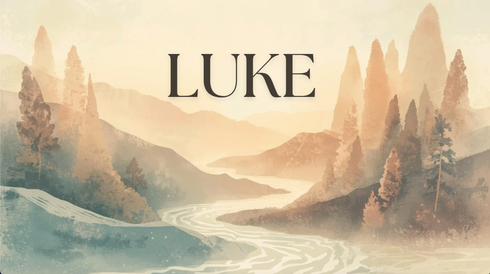
Mark 15: Open For Business
Mark 15 represents one of the most pivotal moments in human history—the crucifixion of Jesus Christ. This chapter doesn't merely recount historical events; it reveals how Jesus' death fundamentally changed humanity's relationship with God by removing barriers that had existed since the fall in Eden.
The chapter begins with Jesus being handed over to Pilate, the Roman governor. This political maneuvering highlights the collision between religious authority and God's ultimate plan. Despite having committed no crime, Jesus faces accusations from the religious leaders who were motivated by envy rather than justice. Pilate's repeated attempts to release Jesus demonstrate how even a pagan ruler recognized Jesus' innocence, yet ultimately surrendered to mob pressure—a powerful reminder that public opinion often prevails over truth and justice in our fallen world.
The mockery Jesus endured reveals profound irony. The soldiers dressed him in purple (the color of royalty) and placed a crown of thorns on his head, unknowingly acknowledging his true identity while intending to humiliate him. This scene powerfully illustrates how Jesus willingly embraced suffering and humiliation to accomplish salvation. While they meant their actions as mockery, they inadvertently participated in a coronation ceremony for the true King of kings. The juxtaposition of their intended ridicule against the cosmic significance of what was actually happening demonstrates how God's plans often unfold in ways completely hidden from human understanding.
Perhaps the most significant moment in Mark 15 comes when Jesus breathes his last and "the curtain in the sanctuary of the temple was torn in two from top to bottom." This seemingly small detail carries enormous theological weight. For centuries, that curtain had separated ordinary people from God's presence in the Holy of Holies. Only the high priest could enter this sacred space, and only once per year. The tearing of this curtain—notably from top to bottom, indicating divine rather than human action—symbolized the revolutionary new access to God made possible through Jesus' sacrifice.
The temple curtain's tearing represented a profound shift in humanity's relationship with God. No longer would people need intermediaries or ritual purification to approach God. Jesus had opened direct access to the throne of grace for all who would come through him. This "open for business" moment transformed spirituality from an exclusive, hierarchical system to an inclusive invitation. The barrier of sin that had separated humanity from God since the Garden of Eden was finally removed through Christ's perfect sacrifice.
Mark's Gospel also highlights some unexpected witnesses to these events. The Roman centurion's declaration, "Truly this man was the Son of God," represents the first Gentile confession of Jesus' divine identity immediately following his death. Additionally, we see the faithful women who had followed Jesus watching from a distance—maintaining their devotion even when most male disciples had fled. These contrasting responses remind us that often those on the margins recognize truth before those in positions of religious authority.
This chapter closes with Joseph of Arimathea, described as "waiting for the kingdom of God," taking a significant risk by requesting Jesus' body and providing proper burial. His courage in associating with a condemned criminal demonstrates how Jesus' death was already inspiring bold faith. The stone rolled against the tomb entrance seems final—yet readers familiar with the story know it's merely setting the stage for the resurrection that will confirm everything Jesus claimed about himself.
Mark 15 leaves us contemplating the paradox at the heart of Christianity: the King who conquered through surrender, the Savior who accomplished victory through apparent defeat, and the God who demonstrated ultimate power through ultimate vulnerability. The temple is now open for business—inviting all who would come to experience direct communion with God through the torn veil of Christ's body.
Let’s read it together.
#biblebreakdown
Get this text to you daily by texting "rlcBible" to 94000.
The More we Dig, The More We Find.




